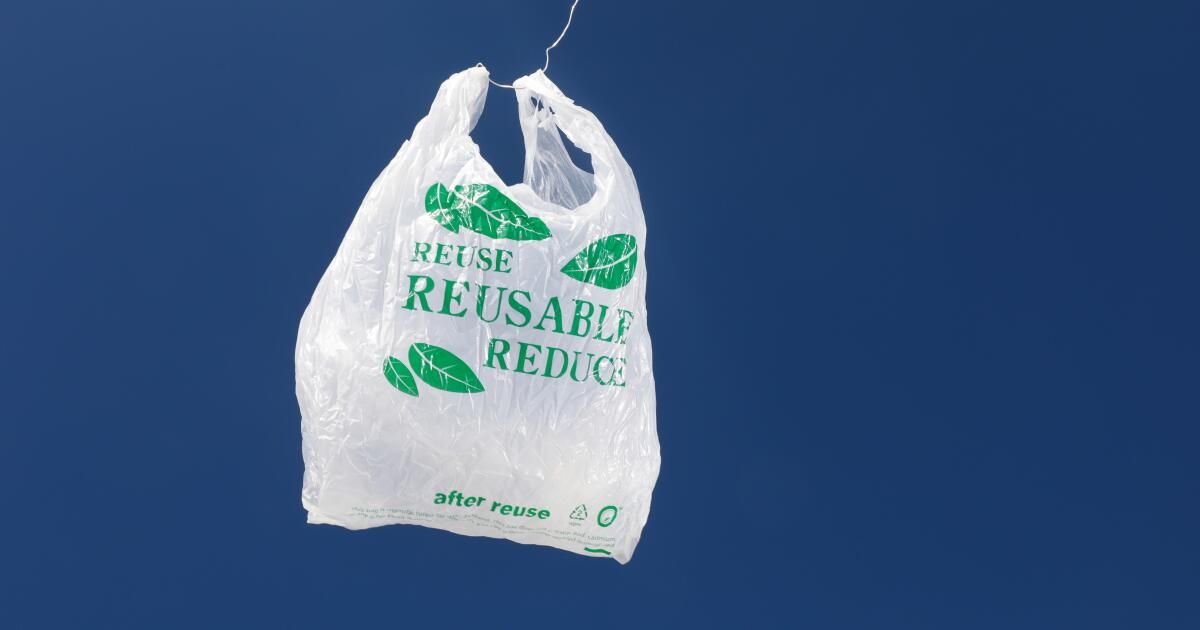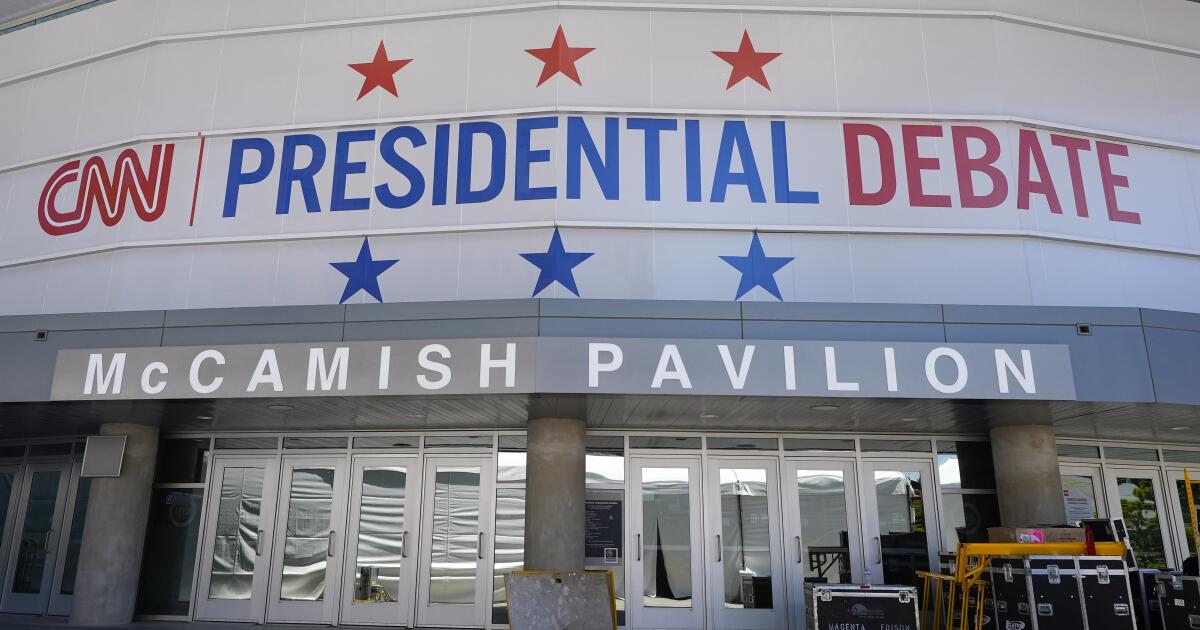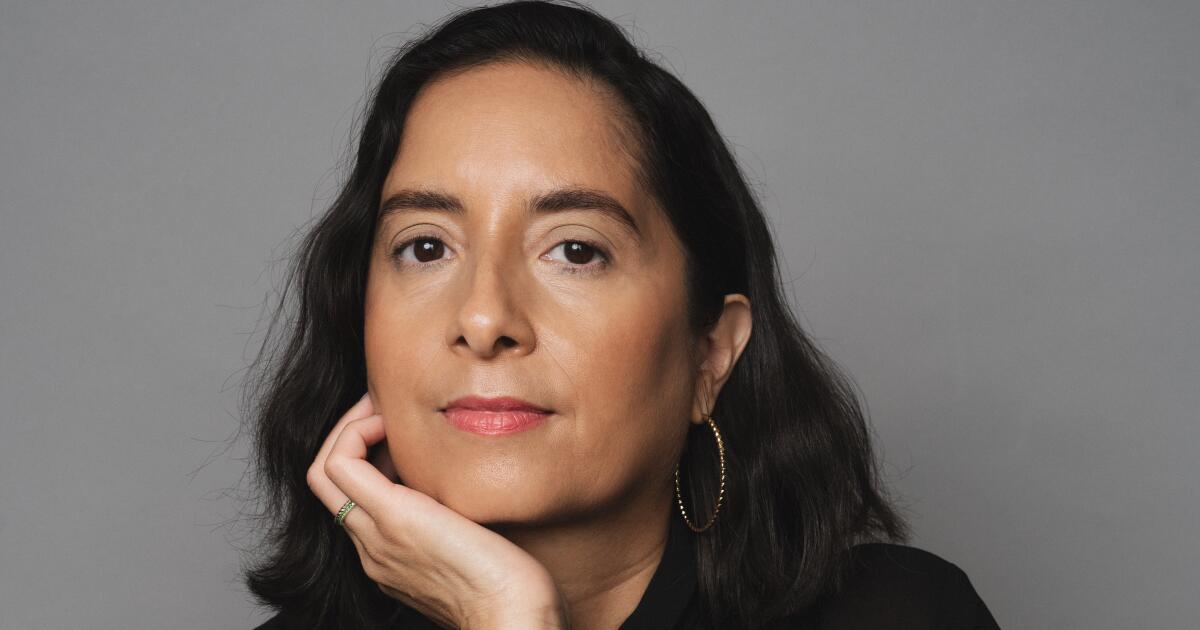Given its green bona fides, it's no surprise that California was the first state in the country to ban single-use plastic bags 10 years ago. Many were hoping that would make a dent in the plastic pollution crisis, one canvas bag at a time. But if you've been to a California supermarket recently, you'll notice that plastic bags haven't disappeared: They're only thicker.
What happened? Plastic bag companies received a warning in legislation that allows grocery stores and large retailers to sell plastic bags for a minimum of 10 cents each if they are reusable and recyclable in California. The problem is that the terms “reusable” and “recyclable” were flexible. Manufacturers simply swapped out low-density polyethylene (LDPE) for high-density polyethylene (HDPE), making the bags heavier, and stamped the chasing arrow recycling symbol on the bottom. (Polyethylene is a hormone disruptor and environmental pollutant.) But few people reuse these bags in practice, and recycling centers in the state generally do not accept them.
This loophole is unfortunate but not shocking. The petrochemical industry has a long history of attempts at regulation and control. If we really want to reduce our plastic use, we have to outwit those tactics.
Synthetic plastics, which are made almost exclusively from chemicals derived from fossil fuels, have been produced for more than a century and have become ubiquitous. Producers of many petrochemical products have been aware of the risks, such as birth defects, for decades. But they kept the damning studies secret, and it took the burgeoning environmental movement of the 1970s for the potential health and environmental harms to hit the public's radar.
When the EPA was established in 1970 and tasked with combating pollution, plastics and the chemicals used in their production, synthetics such as polyvinyl chloride (PVC), polychlorinated biphenyls (PCBs), bisphenol A (BPA), perfluoroalkyl and polyfluoroalkyl substances (PFAS), and phthalates were already found in countless products, including paints and nonstick pans. Since then, hundreds of studies have linked exposure to such chemicals with a wide range of health problems, including cancer, Infertility and low IQ..
So to stem that damage, we have been forced to play catch-up, with limited success.
For example, in 1976 Congress passed the Toxic Substances Control Act, which directed the EPA to ban the production of PCBs, a suspected carcinogen commonly found in electrical equipment, sealants, and other construction materials. The law kept this chemical out of plastics, paints and other new products. However, since PCBs are virtually indestructible and used throughout the world, little could be done to remove existing PCBs from the environment and protect future generations from their harm. Individuals, as well as states and cities such as Oregon, seattle, Vermont and East St. LouisIllinois, have sued Monsanto, which was the only producer of PCBs in the US, to force the company to pay for the damage caused to children and the environment.
In the 1980s, state and local governments began considering legislation to restrict or ban plastic products. To thwart this, fossil fuel and petrochemical companies began aggressively peddling the myth that we could solve the problem of plastic waste through recycling, something they knew was dubious. Actually, Most plastics cannot be recycled.. The consequences of this deception are now the subject of an analysis investigation by California attorney. General Rob Bonta entered Exxon Mobil and other companies.
Fast forward to today, the slippery petrochemical industry has yet to let regulators get a handle on the problem. The shift from LDPE to HDPE in plastic bags demonstrates one of the industry's preferred moves, known as unfortunate substitution. This is when a chemical is publicly discovered to be harmful, phased out, and then replaced with a similar chemical that turns out to be equally harmful. This gives rise to a “whack-a-mole” situation, in which scientists and policymakers struggle to keep up with one regrettable replacement after another.
For example, after decades of consumer agitation and activism to remove the hormone-disrupting industrial chemical BPA from baby bottles, water bottles, pacifiers, food packaging, and other products, the consumer movement celebrated the affirmation of industry that was now producing BPA-free products. . However, it was a pyrrhic victory, because the chemical industry substituted other bisphenols, specifically BPS and BPF, which can be at least as harmful as BPA.
Regarding plastic bags, companies capitalized about the COVID-19 pandemic delaying efforts to reduce the use of single-use bags, wrongly claiming they were more hygienic than reusable bags.
In California, lawmakers are now trying to patch loopholes in the state ban and more clearly define “reusable” to exclude thick bags. However, even those efforts could be hampered, given the industry's history of maneuvering around restrictions. Disposable plastic is a source of corporate profits that will not be stopped by actions directed at a single product.
California's landmark 2022 law takes a more comprehensive approach by requiring 65% of plastic items sold, distributed or imported in the state to be recyclable by 2032. But the law includes a vague exemption for materials with “unique challenges”, that the industry can explode.
Learning from past failed recycling mandates, the law sets clear deadlines and fines for non-compliance. At the very least, the government should take advantage of this to keep polluters in line, taking them to court if necessary.
Rebecca Fuoco is director of science communications at the Green Science Policy Institute. David Rosner, professor of history and sociomedical sciences at Columbia University, and Gerald Markowitz, professor of history at the John Jay College of Criminal Justice, are authors of next “Building the worlds that kill us.”












